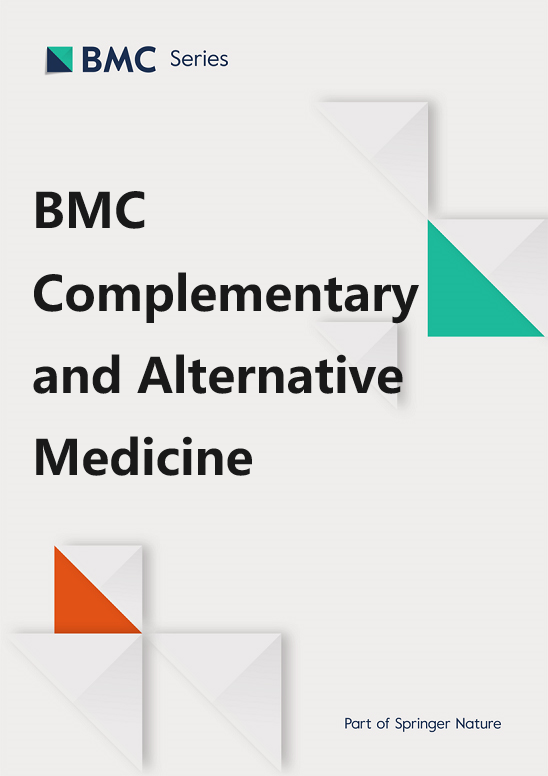基于网络药理学和实验验证的桑梓扬琴煎剂治疗哮喘的机制
IF 3.4
2区 医学
Q1 Medicine
引用次数: 0
摘要
哮喘是一种慢性气道炎症性疾病,以气道炎症、黏液分泌亢进、气道高反应性为特征。三子养心煎剂(SZYQD)被广泛用于哮喘的治疗。其抗哮喘活性在动物模型中已有报道,但其治疗哮喘的确切机制和靶点尚未完全阐明。本研究采用网络药理学方法预测 SZYQD 在哮喘中的活性成分、靶点和信号通路,包括潜在靶点预测、蛋白-蛋白相互作用(PPI)网络构建和分析、基因本体(GO)和京都基因组百科全书(KEGG)通路分析。从 SZYQD 中确定了有效成分,并根据网络药理学结果进行了分子对接。通过构建卵清蛋白(OVA)和脂多糖(LPS)诱导的小鼠哮喘模型,评估了SZYQD的治疗效果。此外,通过实时 PCR 和 Western 印迹技术,在体外测试了 SZYQD 及其有效成分对巨噬细胞和气道上皮细胞中炎症和 MUC5AC(哮喘的两种主要病理生理异常)表达的调节作用。在相关数据库中共筛选出 28 种有效成分和 111 个 HUB 基因,包括 3 种关键成分(木犀草素、β-胡萝卜素和西那平)和 9 个核心靶基因(JUN、CTNNB1、IL10、TP53、AKT1、STAT3、TNF、IL6 和 EGFR)。KEGG和GO分析表明,SZYQD的潜在抗哮喘机制与PI3K-Akt信号通路和脂多糖反应等有关。在体内哮喘模型中,我们的研究结果表明,SZYQD通过抑制炎症和粘液过度分泌,对OVA和LPS诱导的哮喘小鼠具有保护作用。同样,细胞实验表明,SZYQD提取物或其主要活性成分木犀草素能显著降低脂多糖(LPS)诱导的巨噬细胞中IL-6的表达和NF-κB通路的激活。此外,SZYQD 提取物或木犀草素还能抑制 EGF 诱导的气道上皮细胞 AKT 通路的活化和 MUC5AC 的表达。SZYQD的抗哮喘机制可能与网络药理学预测的通过调节NF-κB和AKT信号通路抑制炎症和气道粘液高分泌有关,这为SZYQD在哮喘治疗中的应用提供了更多证据。本文章由计算机程序翻译,如有差异,请以英文原文为准。
The mechanism of Sanzi Yangqin decoction for asthma treatment based on network pharmacology and experimental verification
Asthma is a chronic airway inflammatory disease characterized by airway inflammation, mucus hypersecretion, airway hyper-reactivity. Sanzi Yangqin Decoction (SZYQD) is widely prescribed for asthma treatment. Its anti-asthma activities have been reported in animal model, but the exact mechanism and targets of SZYQD in asthma treatment have not been fully elucidated. A network pharmacological approach was used to predict the active components, targets, and signalling pathways of SZYQD in asthma, including potential target prediction, protein‒protein interaction (PPI) network construction and analysis, and Gene Ont (GO) and Kyoto Encyclopedia of Genes and Genomes (KEGG) pathway analysis. The active ingredients were identified from the SZYQD, and were molecular docked according to the results of network pharmacology. A mouse model of asthma induced by ovalbumin (OVA) and lipopolysaccharide (LPS) was constructed to evaluate the therapeutic effect of SZYQD. Furthermore, the effects of SZYQD and its active ingredients were tested in vitro for regulating inflammation and MUC5AC expression (two main pathophysiologic abnormalities of asthma) in macrophages and airway epithelial cells by using Real-time PCR and western blotting. A total of 28 active ingredients and 111 HUB genes were screened in the relevant databases, including three key ingredients (luteolin, β-carotene, and Sinapine) and nine core target genes (JUN, CTNNB1, IL10, TP53, AKT1, STAT3, TNF, IL6 and EGFR). KEGG and GO analysis indicated that the potential anti-asthmatic mechanisms of SZYQD were related to PI3K-Akt signalling pathway and response to lipopolysaccharide, etc. In the in vivo asthmatic model, our findings demonstrated that SZYQD exerted a protective effect against asthmatic mice induced by OVA and LPS through the inhibition of inflammation and mucus overproduction. Consistently, cell experiments showed that the SZYQD extract or the key active ingredients luteolin significantly decreased lipopolysaccharide (LPS)-induced IL-6 expression and activation of the NF-κB pathway in macrophages. In addition, SZYQD extract or luteolin inhibited activation of the AKT pathway and expression of MUC5AC induced by EGF in airway epithelial cells. The anti-asthmatic mechanism of SZYQD might be associated with inhibiting inflammation and airway mucus hypersecretion by regulating the NF-κB and AKT signalling pathways as predicted by network pharmacology, which provides more evidence for the application of SZYQD in asthma treatment.
求助全文
通过发布文献求助,成功后即可免费获取论文全文。
去求助
来源期刊

BMC Complementary and Alternative Medicine
INTEGRATIVE & COMPLEMENTARY MEDICINE-
CiteScore
7.00
自引率
0.00%
发文量
0
审稿时长
3 months
期刊介绍:
BMC Complementary Medicine and Therapies is an open access journal publishing original peer-reviewed research articles on interventions and resources that complement or replace conventional therapies, with a specific emphasis on research that explores the biological mechanisms of action, as well as their efficacy, safety, costs, patterns of use and/or implementation.
 求助内容:
求助内容: 应助结果提醒方式:
应助结果提醒方式:


